How to support garden plants as they grow – expert tips for flowering climbers, vining veggies, large perennials, and more
Knowing how to support garden plants will help them flourish rather than flop. Here's everything you need to know
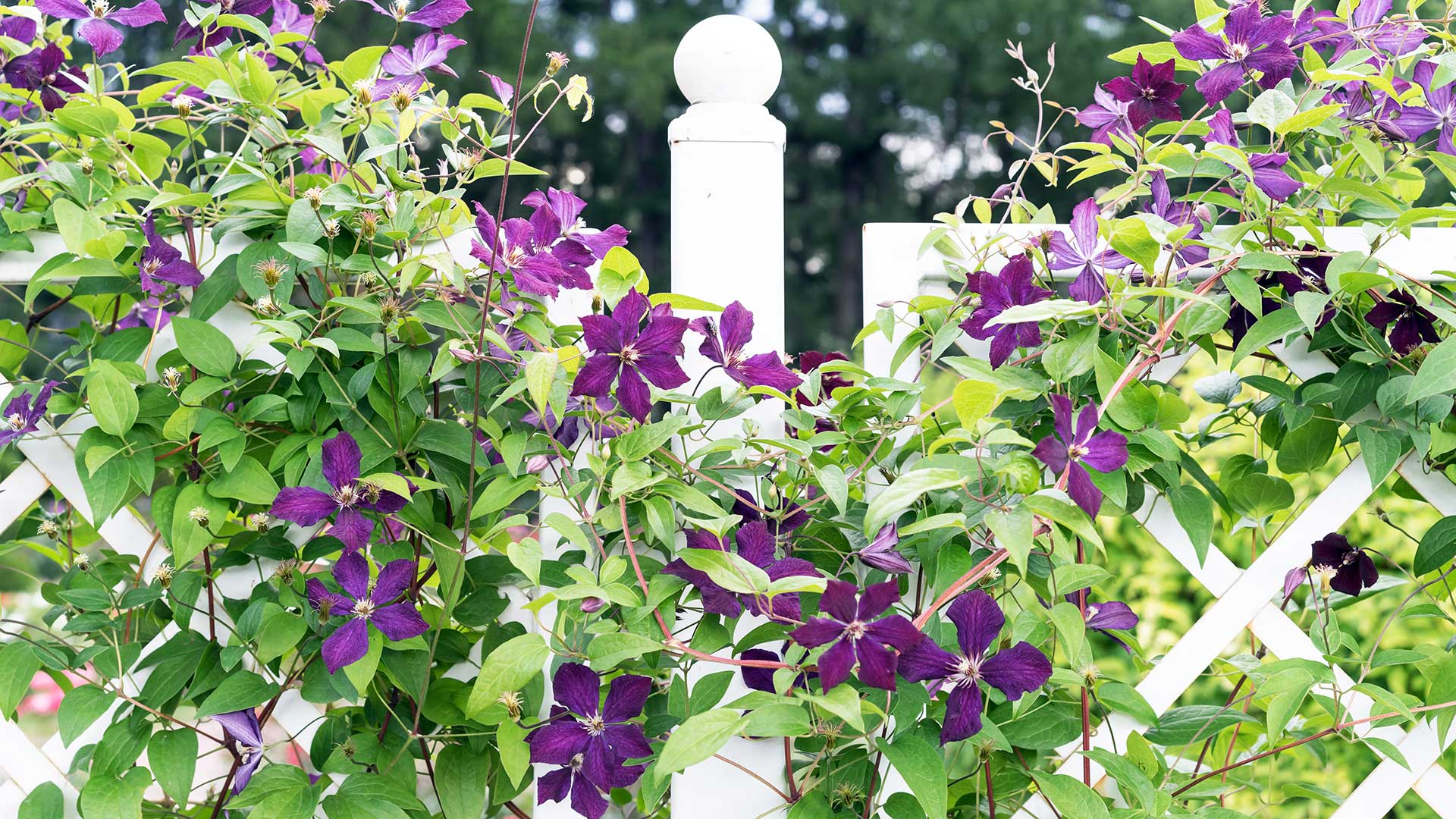

Knowing how to support garden plants opens tons of opportunities for your outdoor space. Whether you want to grow a teepee of sweet peas, create a rose-covered archway, or enjoy a tasty crop of homegrown beans, sturdy structures are a must.
Plant supports aren't just for climbing plants, though. Some types can be used to lift heavy blooms of perennials (such as peonies), or to keep unruly stems from collapsing onto paths. Needless to say, they can play a crucial role in recreating a wide range of garden trends, from relaxed, cottage-style looks to more contemporary designs.
Below, you'll find lots of advice from gardening experts on how to support garden plants as they grow. From tips on tying in to the types of supports to consider, this guide has all the info you need to elevate your plants (and as a result, your space).
How to support garden plants: An expert guide
Plant supports are important for aesthetic reasons, as well as for keeping plants in top health. They can stop certain plants from flopping over or suffering breakage due to harsh weather conditions – an easy way to protect plants from heavy rain. They also prevent plants from growing into a tangled and overcrowded mess, which in turn, helps reduce the risk of disease.

A support keeps sweet peas in order
Plants that need supporting
Plenty of cottage garden plants need supports to truly thrive. Vicky Standing, an expert from Agriframes, says, "Climbing roses, sweet peas, clematis, and honeysuckle need vertical support to reach their full height and flourish, while tall perennials like delphiniums, peonies, and dahlias often need staking or supporting closer to ground level to prevent them flopping after rain."
Some larger shrubs can also benefit from a bit of support once they're in bloom. Garden designer Harriet Worsley shares that one of the plants she most often uses supports for is Hydrangea arborescens "Annabelle", which has "exuberant, heavy puffs of white flowers". "An 'Annabelle' with more sturdy stems has now been bred, however, which is less likely to spread and flop," she adds.
Of course, it's not just flowers that need supporting. If you're growing a vegetable garden, you'll likely need to put in structures for at least one or two of your crops. As Vicky points out, "vegetables such as beans, peas, and tomatoes perform better (and look great) when given a stylish frame to grow up – it keeps crops off the ground and makes harvesting easier, too."
Sign up to our free daily email for the latest royal and entertainment news, interesting opinion, expert advice on styling and beauty trends, and no-nonsense guides to the health and wellness questions you want answered.
Chris Bonnett of GardeningExpress adds to this point, noting how things like tomatoes can collapse under their own weight. "Supporting them not only prevents this but also ensures healthier growth and better airflow." Do note that this is most important for indeterminate tomatoes – bush varieties are much more compact (and, for this reason, make good patio container plants). It's also possible to support squash and cucumbers so that they grow vertically, which is a useful way to save space in a small garden.

Agriframes have been designing and manufacturing stylish plant supports and garden structures for over 50 years. Vicky Standing is part of their expert team, working with designers and advising customers on how to get great results from their wide range of products.

Garden designer Harriet Worsley set up Worsley Design & Consultancy after studying Garden Design and Planting Design and studying for her RHS Certificate of Horticulture. She worked as a landscape designer for a firm in Notting Hill and as a weekly volunteer at the Royal Botanic Gardens, Kew, where she honed her plant knowledge. She has designed everything from small London roof terraces to large country gardens.

Chris Bonnett is the founder of online garden centre GardeningExpress and has been in the horticulture industry for over 20 years. Whilst he was a teenager he combined his passion for the outdoors with the internet to deliver quality plants across the UK and Europe.
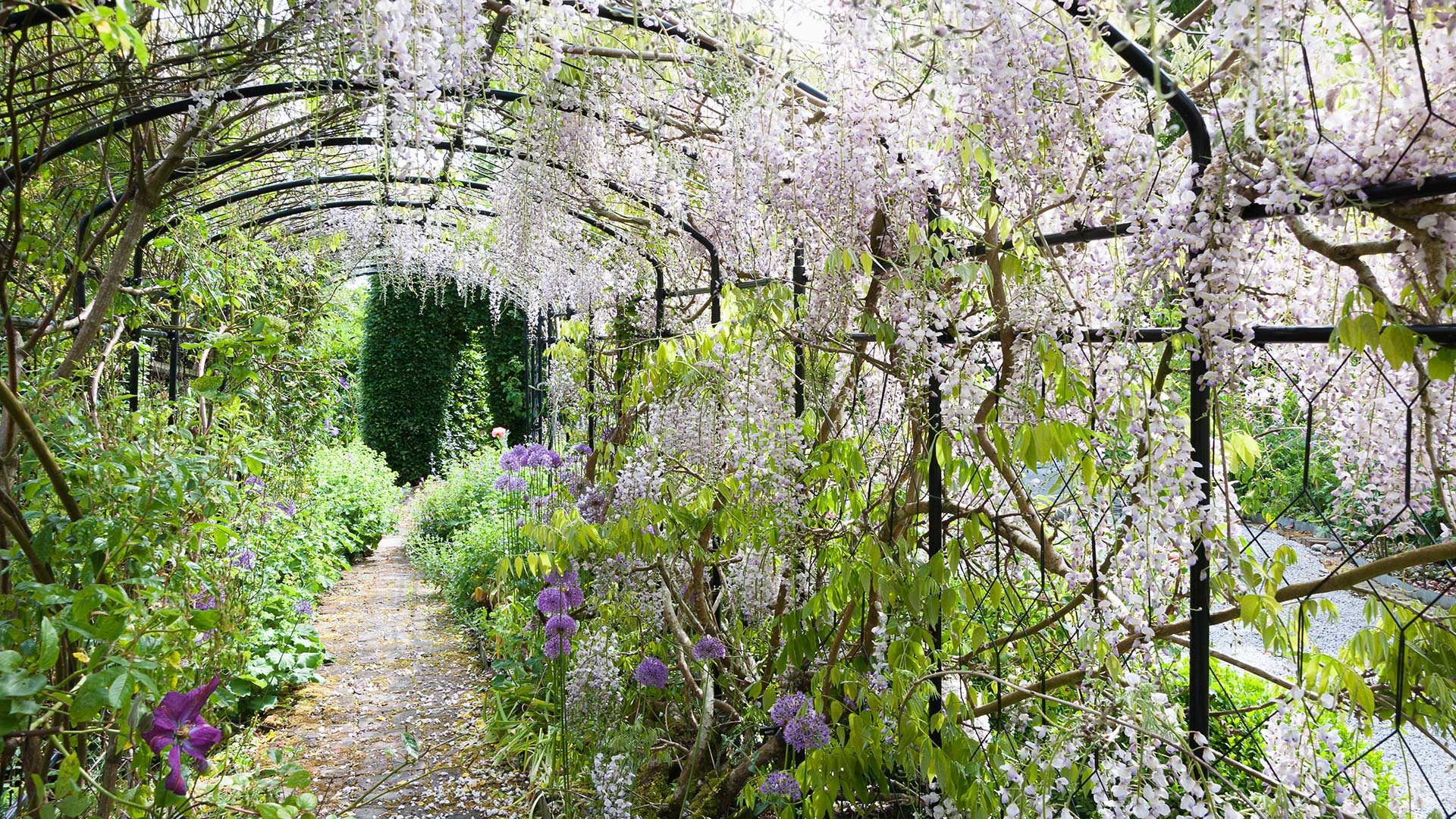
Here, the Monet pergola from Agriframes supports a wisteria, creating a beautiful display
Picking the right support for each plant
Choose supports with your plants in mind – according to Vicky, "the right support depends on how the plant grows". Climbing plants like clematis need something to twine or cling to, such as mesh, wires, or a trellis, she notes.
Harriet says, "Most climbers that I use in my designs need training up vertical surfaces, so we always install horizontal wires on vine eyes on walls and fences, and then tie in the clematis, Trachelospermum jasminoides, or vines with little cuts of twist wire. We always use barrel strainers on the horizontal wires, so that they can be tightened easily."
Vicky also suggests installing trellis panels along walls and fences for flowering vines or espaliered fruit. This is a great way to create a botanical backdrop, or even screen your neighbour's view. Traditional obelisks and plant frames are also ideal for climbers, and offer vertical interest, she adds.
The classic obelisk from Agriframes has a timeless style and comes in different sizes and colours, including a pretty sage green. "Rambling roses, which don’t naturally cling, need to be tied onto a robust frame like an arch or pergola," Vicky adds.
For herbaceous borders, Vicky recommends using discreet link stakes (Agriframes sell them in two different colours) and grow-through grids to keep plants upright without stealing the show. She also suggests using subtle ring supports for bushy perennials.
If you're looking for a quick and budget-friendly solution, you can make a simple stake from a sturdy stick or a bamboo cane (the latter of which can be bought from Amazon). All you need to do is push it into the soil next to your plant, before carefully tying the two together. There are also more ornate versions available to buy, which make architectural focal points in borders.
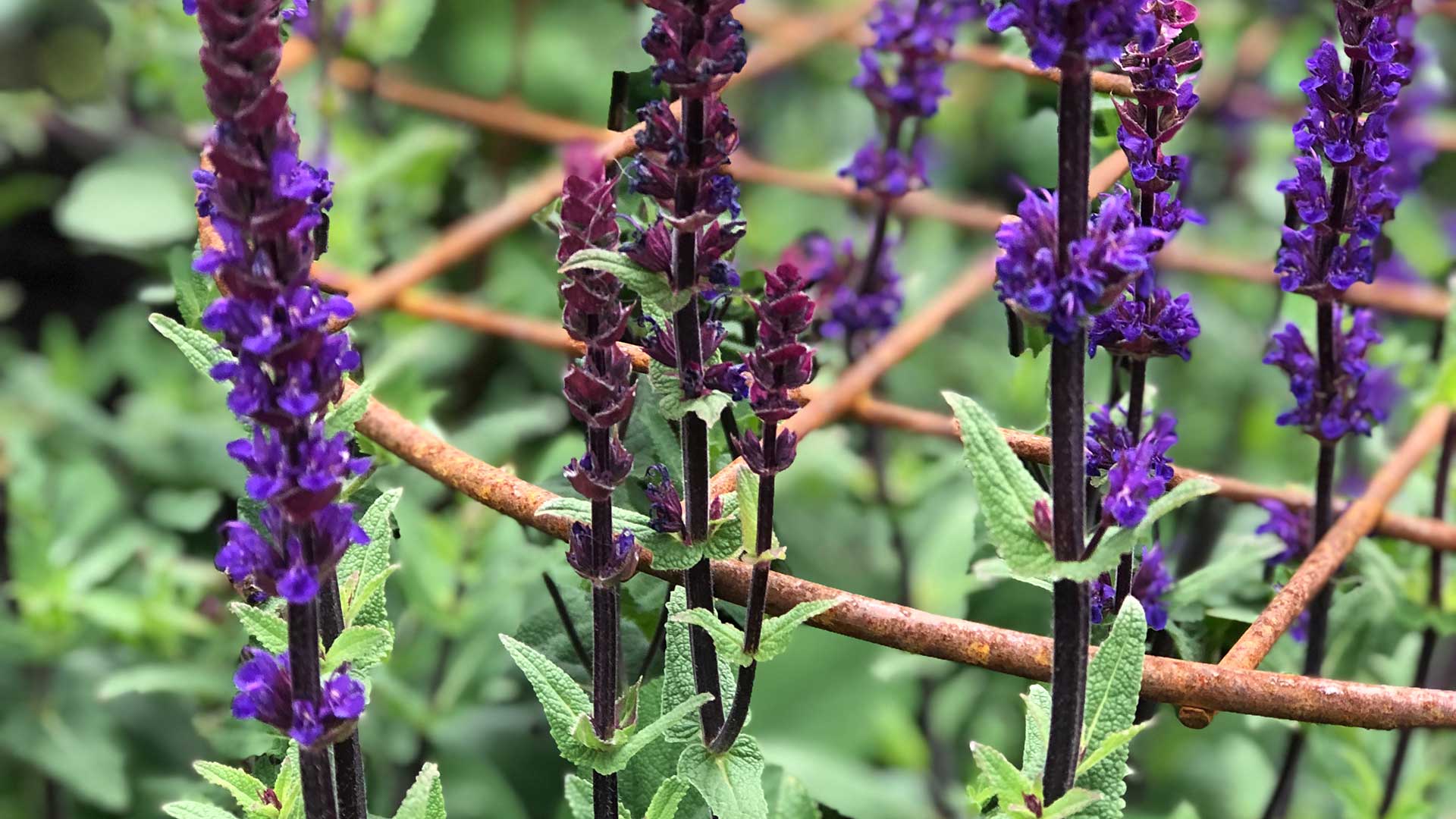
This grow through frame from Agriframes pairs perfectly with salvias
For vegetable patches, Vicky says arches and decorative frames can do double duty – "supporting crops like squashes or beans while adding structure and visual interest to your plot." She also recommends pairing some veggies, such as tomatoes, with purpose-built towers or spiral stakes.
You can alternatively grow tomatoes in cages. Chris explains they allow the plants to grow upright, while allowing for easy pruning and harvesting. "Once installed, they require little fuss or maintenance." What's more, Fiona says you can use tomato cages for vining vegetables, such as squash – a useful gardening tip if you love to grow your own produce.

Tomato cages are a simple way to support these delicious crops
When to install plant supports
According to Vicky, the best time to put plant supports in place is early in the growing season – "ideally before your plants really take off."
"Installing supports while plants are still small helps guide their growth naturally and avoids damaging roots later on," she says.
"It also ensures that the support blends into the display as the season progresses, rather than looking like an afterthought. A little planning early on pays off with healthier, better-shaped plants later in the season."
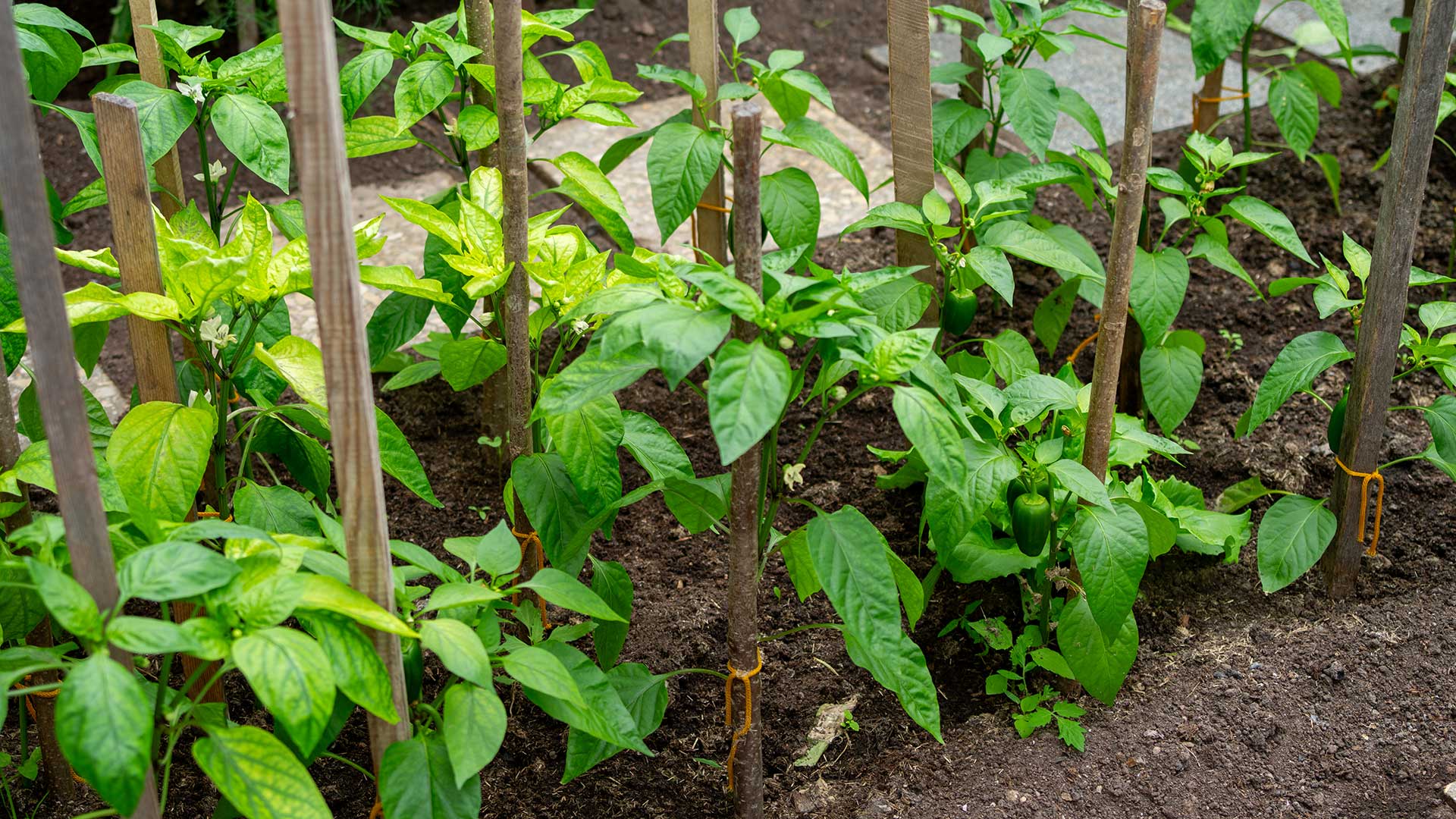
If you're sowing annual seeds or transplanting seedlings, having supports already in place makes it easier to position your plants, and avoids disturbing the roots as they grow
How to tie in plants
Tying in correctly is important for keeping your best plants healthy. Vicky recommends using soft ties, twine, or specialist plant clips to gently secure stems to their supports, and says to avoid anything that could cut into the plant as it grows.
Agriframes have a range of soft ties available, as well as biodegradable jute twine that can be added to your homemade compost when you've finished using it. Whatever you use, avoid tying plants in too tightly – the plant needs a little room to move and grow.
"Check regularly through the season, especially after strong winds or heavy rain, and retie as needed to keep things secure," Vicky continues. She suggests a little-and-often approach – "it keeps plants supported without stress or damage."
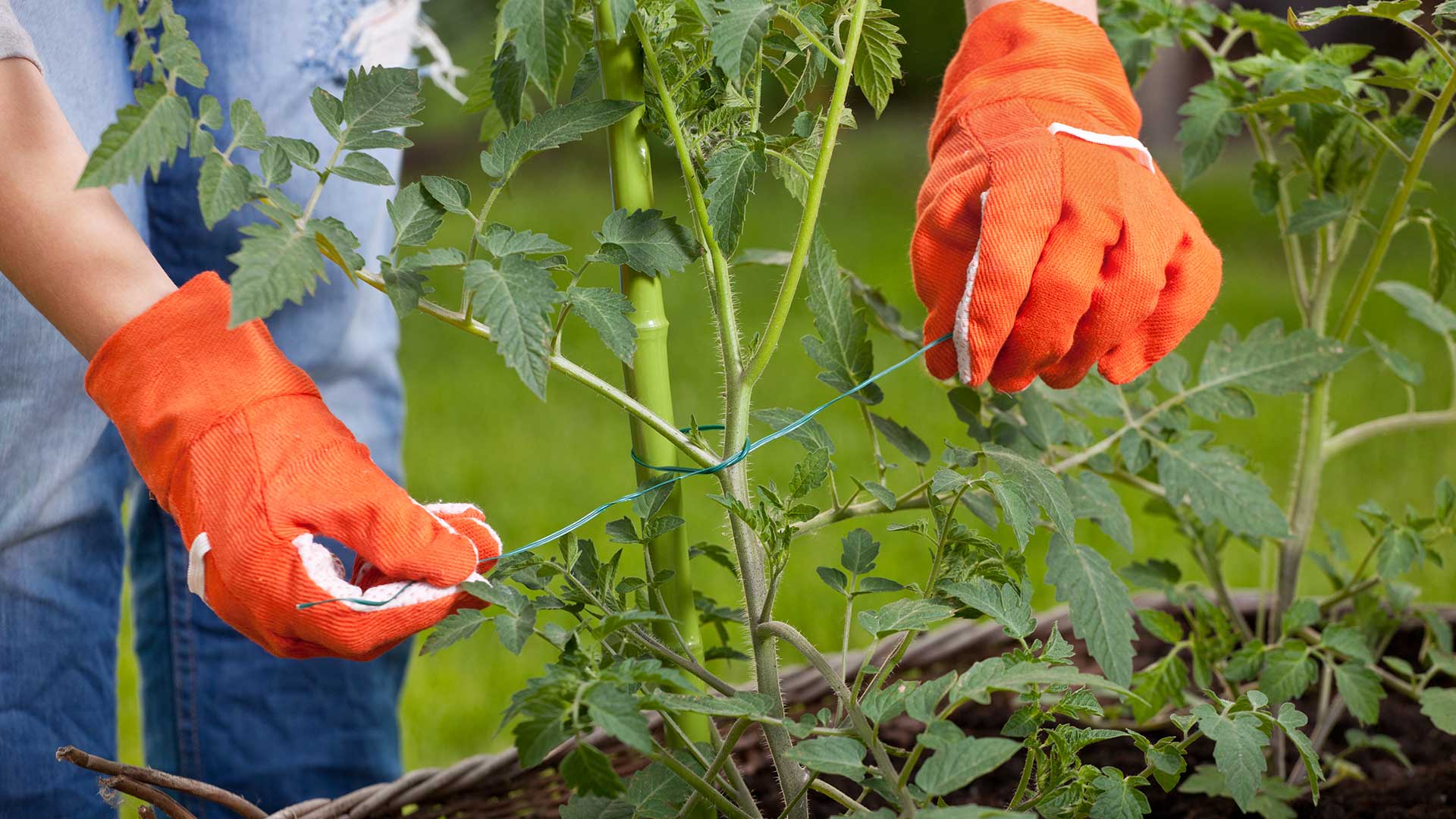
Avoid pulling ties too tightly around stems
FAQs
How can you make a DIY plant support?
Chris says that bamboo is a simple, classic and inexpensive way to support plants. You can also use long, sturdy sticks.
A teepee can be put together quite easily with a few bamboo poles or sticks and some twine, and supports sweet peas perfectly. You can also create horizontal supports for climbing beans and peas; just ensure your structure is tied together tightly and the ends of the anchoring sticks are buried firmly into the soil to resist windy weather.
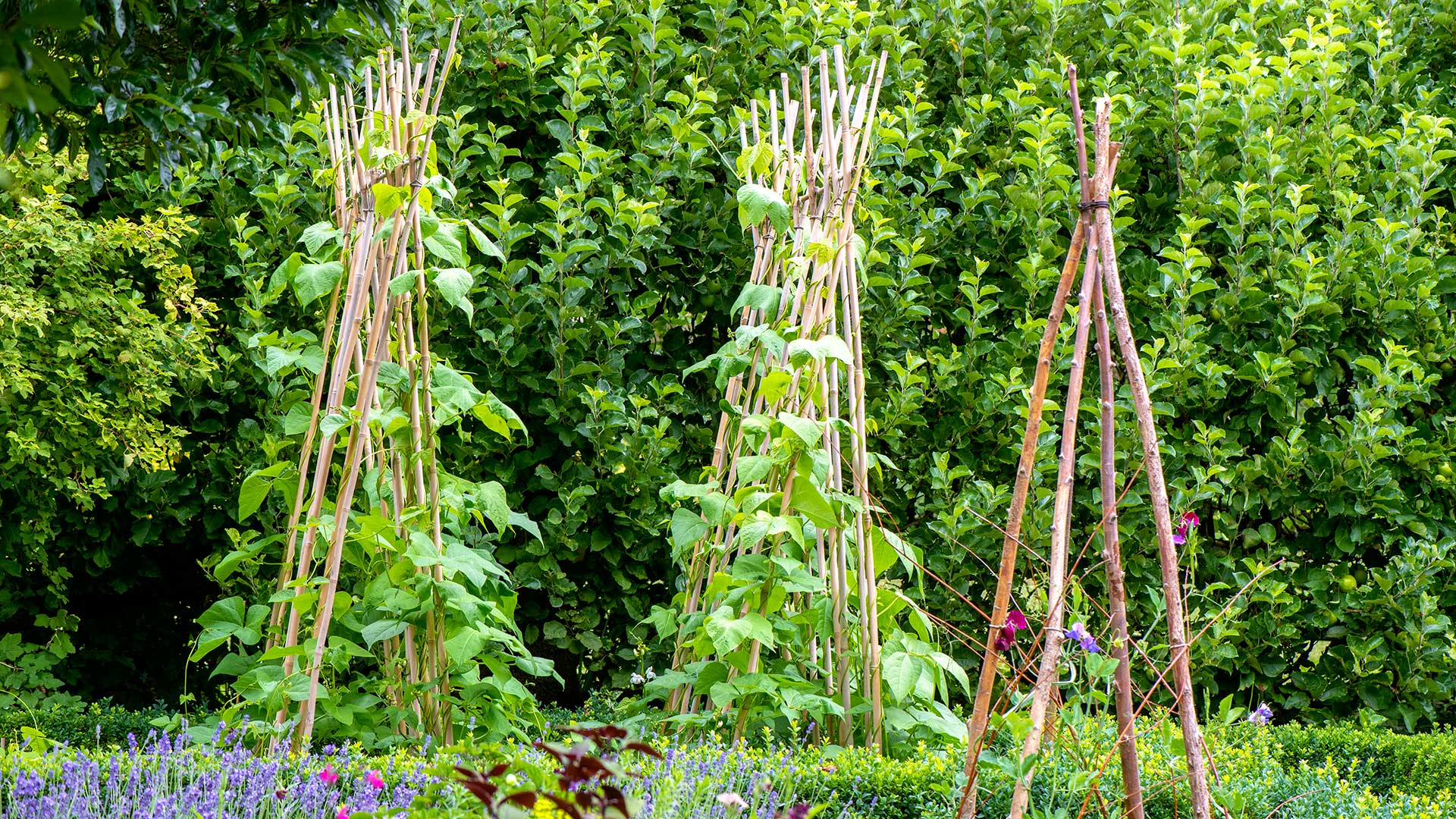
Homemade supports can work well with annual climbers
Can you add plant supports to houseplants?
Some types of supports can be useful when caring for indoor plants, too. While vining houseplants, such as pothos, look stunning when positioned up high (to show off their cascading stems), they can also be trained upwards or even horizontally if supports are in place. For thin-stemmed plants, a few command hooks (available from Amazon) attached to the wall can be all it takes.
Monsteras are another example that can benefit from tying in to a support, as otherwise they tend to sprawl and become unruly. You'll need something sturdy to take the weight of their large leaves – a moss pole, such as this one from Crocus, is perfect.
Looking for more summer gardening advice? Our guides on deadheading and watering plants properly are a must-read for a flourishing space.

The garden was always a big part of Holly's life growing up, as was the surrounding New Forest where she lived. Her appreciation for the great outdoors has only grown since then; she's been an allotment keeper, a professional gardener, and a botanical illustrator. Over three years ago, Holly started writing about plants and outdoor living full-time, first for Gardeningetc.com and now for popular lifestyle titles such as Homes & Gardens.